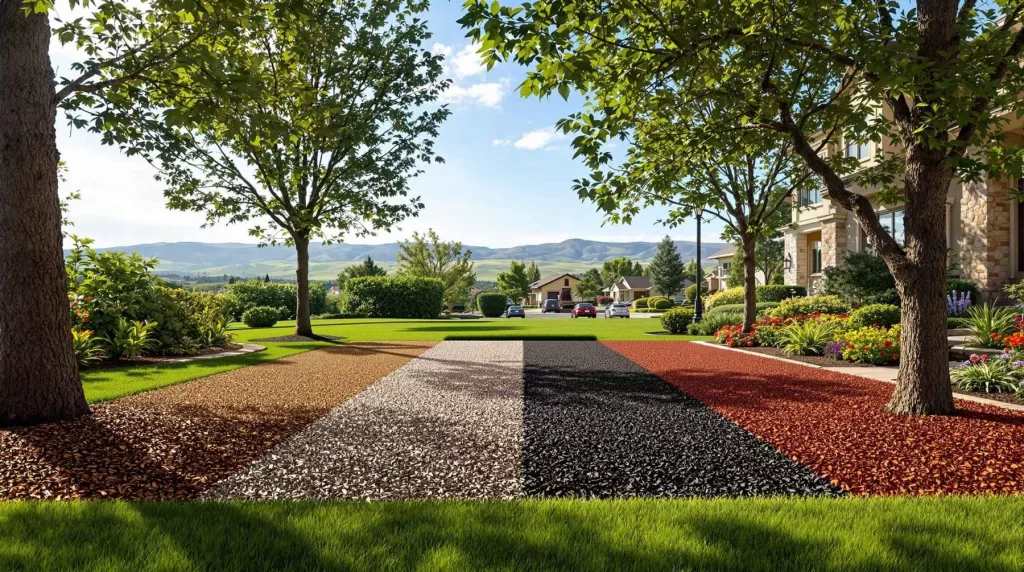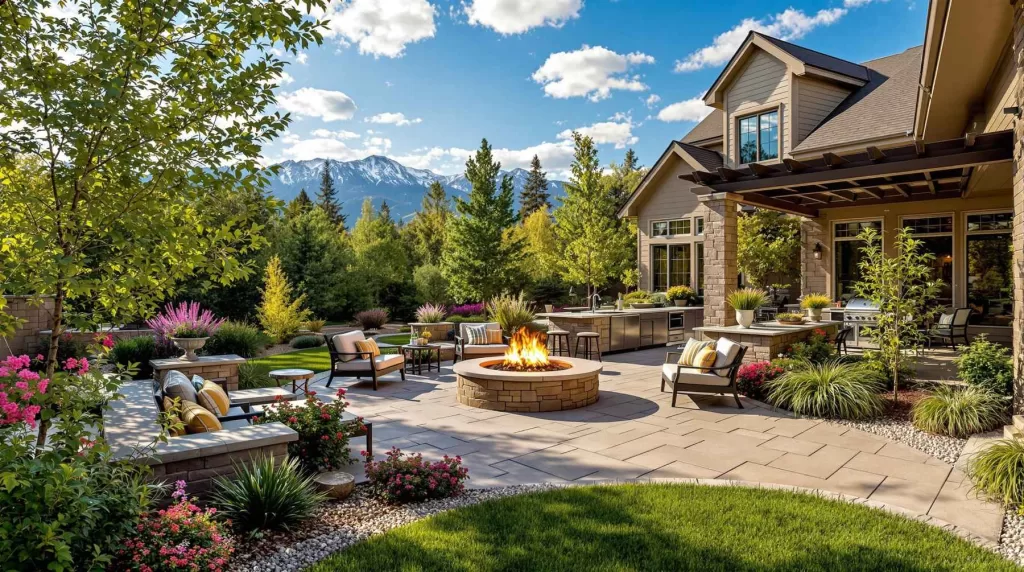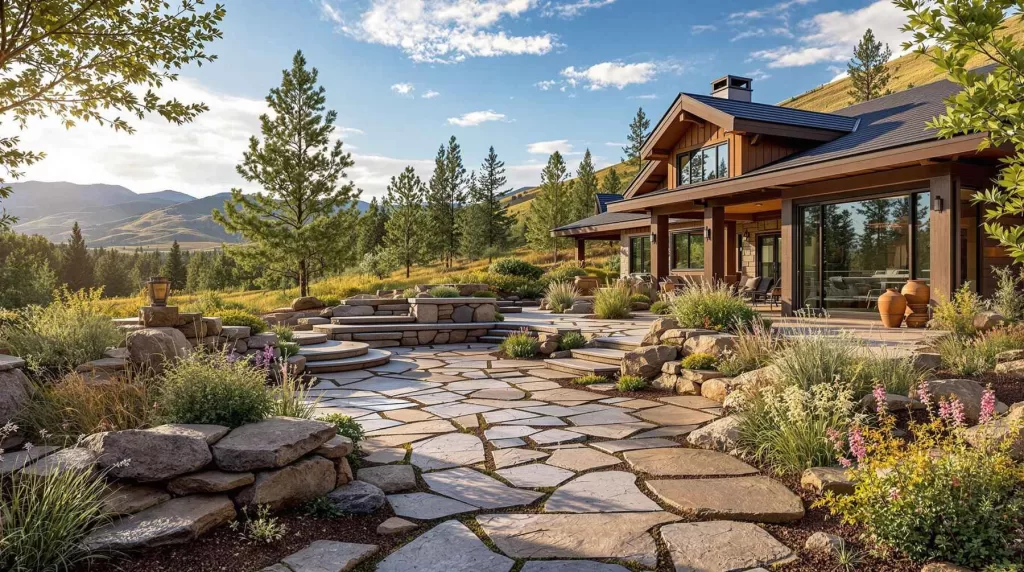Introduction
As winter begins to fade, it’s the perfect time for Castle Pines homeowners to get a head start on spring landscaping. Preparing your yard during late winter ensures that your outdoor space bounces back beautifully once the growing season begins. From assessing winter damage to prepping your lawn and irrigation system, this checklist will help set the stage for a vibrant and healthy landscape all season long.
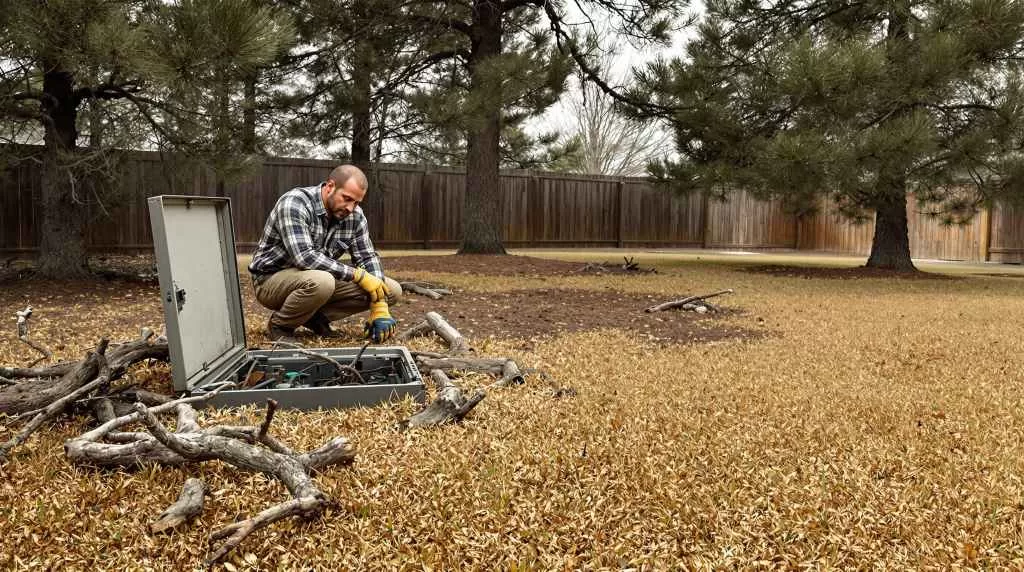
Assessing Winter Damage
Before jumping into planting or lawn care, it’s crucial to evaluate how your yard held up during the colder months. A thorough inspection of trees, shrubs, grass, and irrigation components can reveal issues early, preventing costly repairs or replacements. For homeowners tackling these steps or considering updates, our Castle Pines landscaping team can help assess damage and recommend customized solutions.
Inspecting Trees and Shrubs
Start by examining trees and shrubs for broken branches, frost cracks, or signs of disease. These issues often go unnoticed until spring growth is stunted. Trim any dead or damaged limbs now to promote healthier development as temperatures warm.
Checking Lawn Health
Take a walk across your lawn and look for bare patches, discolored turf, or matted areas—all signs of snow mold or winter kill. Even if it looks dormant, early detection helps plan whether overseeding or sodding will be needed.
Reviewing Irrigation Components
Frozen soil and shifting temperatures can wreak havoc on irrigation systems. Inspect sprinkler heads, drip lines, and valve boxes for cracks or leaks. Identifying damage now gives you time to make repairs before activating the system in spring.

Planning Early Spring Projects
Late winter is the ideal time to start mapping out your spring landscape goals, especially before contractors book up. Working with Castle Pines landscaping experts during this planning phase ensures your vision aligns with HOA rules, climate conditions, and proper scheduling.
Reviewing HOA Guidelines
Castle Pines has strict HOA landscaping rules, and getting ahead of them can prevent unwanted delays. Take time now to review your neighborhood’s specific regulations, particularly if you’re planning hardscape features, tree removals, or turf replacement.
Scheduling Contractors Early
Landscape crews book fast once the weather warms up. By contacting professionals in late winter, you secure your spot before the spring rush and give them time to gather materials, permits, and designs tailored to your property.
Designing New Features
Whether you’re dreaming of a new paver patio, turf lawn, or custom fire pit, this is the moment to get your ideas down on paper. Collaborating with a designer now allows you to finalize layouts and materials while ensuring your installation can begin as soon as the ground is workable.
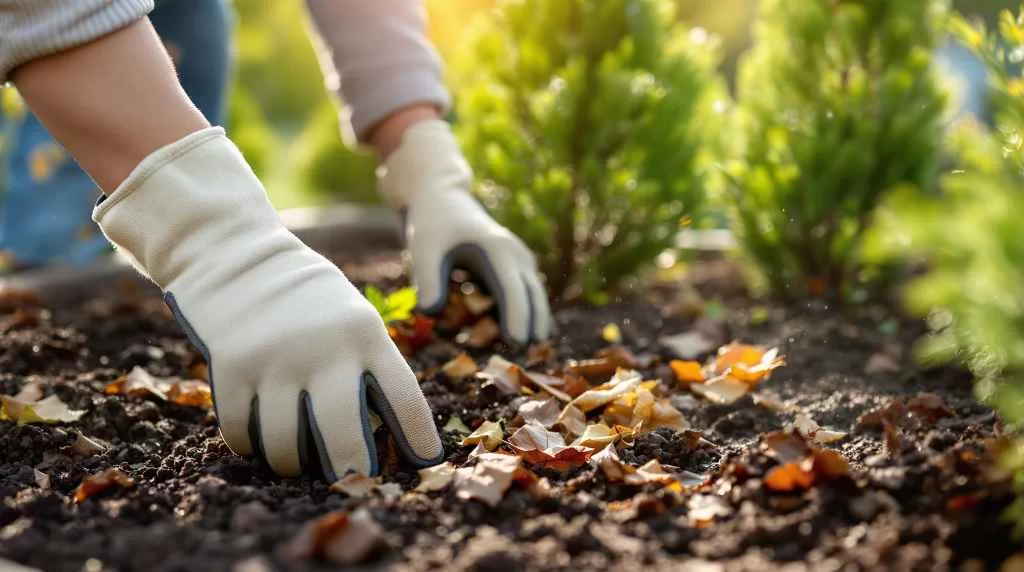
Prepping Plant Beds
Getting your plant beds ready in late winter gives your landscape a clean, organized head start for spring. This stage sets the foundation for healthier plants, better soil performance, and a more polished appearance once the growing season kicks in.
Clearing Debris and Mulch
Start by removing any fallen leaves, dead stems, and leftover mulch that could harbor pests or diseases. Clearing beds now allows soil to warm up faster and prevents mold or rot from developing in the spring.
Soil Amendment and Fertilization
Castle Pines soils can be compact and nutrient-poor after winter. Late winter is a great time to loosen the soil and mix in compost or organic fertilizer, ensuring your plants have the nutrients they need when they begin growing.
Defining Bed Edges
Clean edges create a crisp, intentional look. Whether you’re using a spade, bender board, or steel edging, re-cutting or installing edges now gives your beds a neat, defined border before planting begins.
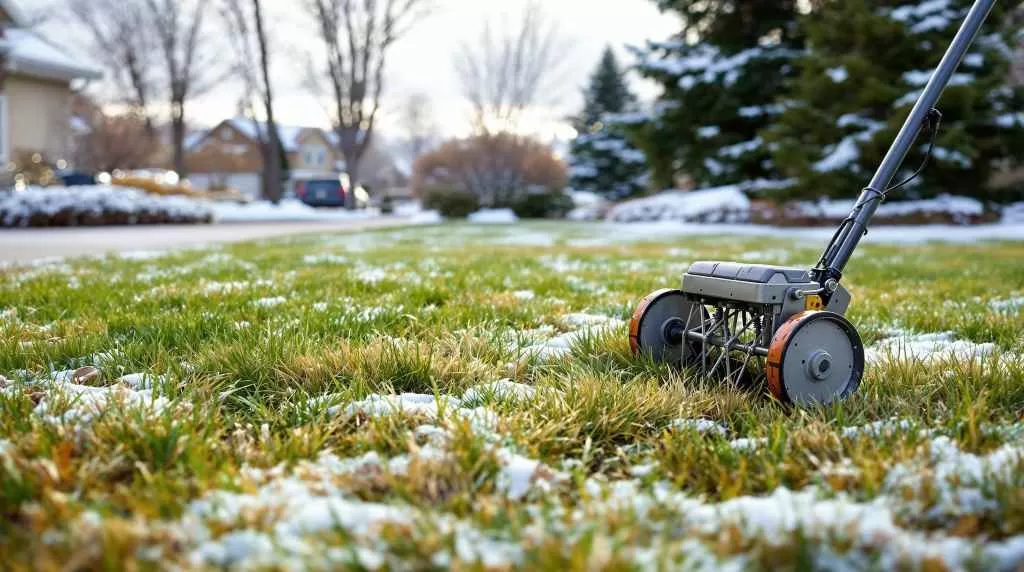
Lawn Preparation Tasks
Late winter is the perfect window to prepare your lawn for spring growth. Tackling a few key tasks now will help wake up your turf early, reduce weed pressure, and set your yard up for a lush, healthy appearance.
Raking and Aerating
Rake up dead grass and thatch to let in sunlight and air. If your lawn feels compacted, consider scheduling core aeration before applying fertilizer—it improves root growth and water absorption.
Applying Pre-Emergent
To stop weeds like crabgrass before they appear, apply a pre-emergent herbicide while soil temperatures are still cool. Timing is critical, so aim for application just before the last frost or right as temperatures start consistently rising.
Early Season Fertilization
Use a slow-release fertilizer designed for cool-season grasses to give your lawn an early nutrient boost. Avoid over-fertilizing too soon, but a light application now can encourage healthy spring green-up and root development.
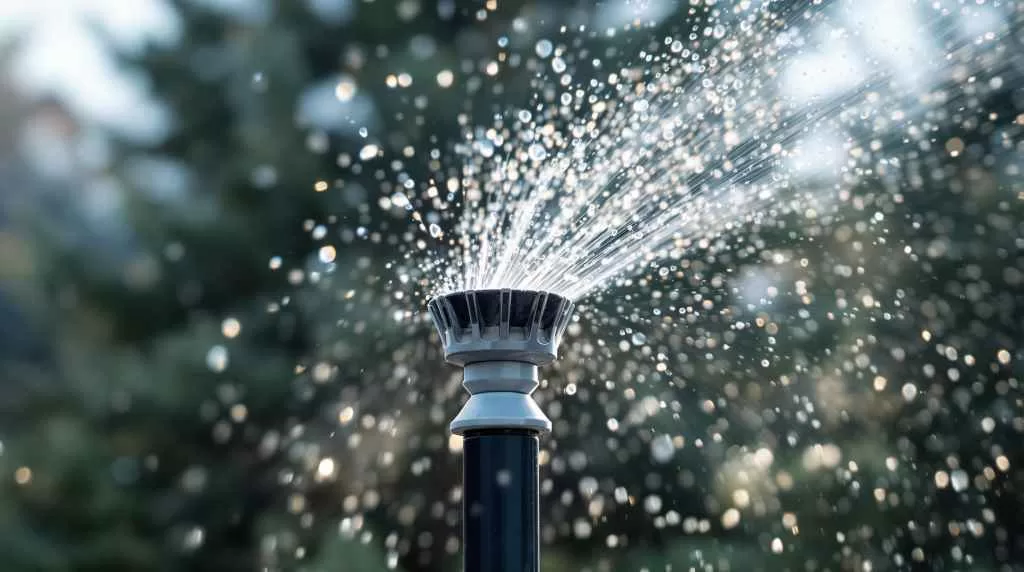
Irrigation System Activation
As temperatures begin to rise in Castle Pines, it’s time to prep your irrigation system for spring. A smooth startup ensures efficient watering, prevents costly leaks, and helps your lawn and plants get the hydration they need from day one.
Checking for Leaks and Breaks
Start by visually inspecting your valves, pipes, and sprinkler heads for any signs of cracking or damage caused by freezing temps. Catching these issues early helps you avoid underground leaks or wasted water.
Testing Each Zone
Manually run each zone and walk the property while it’s operating. Look for uneven spray patterns, clogged nozzles, or sunken heads, all of which can impact water distribution and plant health.
Updating Controller Settings
Update your irrigation controller for spring conditions with shorter run times and fewer days per week, adjusting as needed depending on your soil and plant types. If your system has seasonal adjustment features, use them to save water without sacrificing coverage.
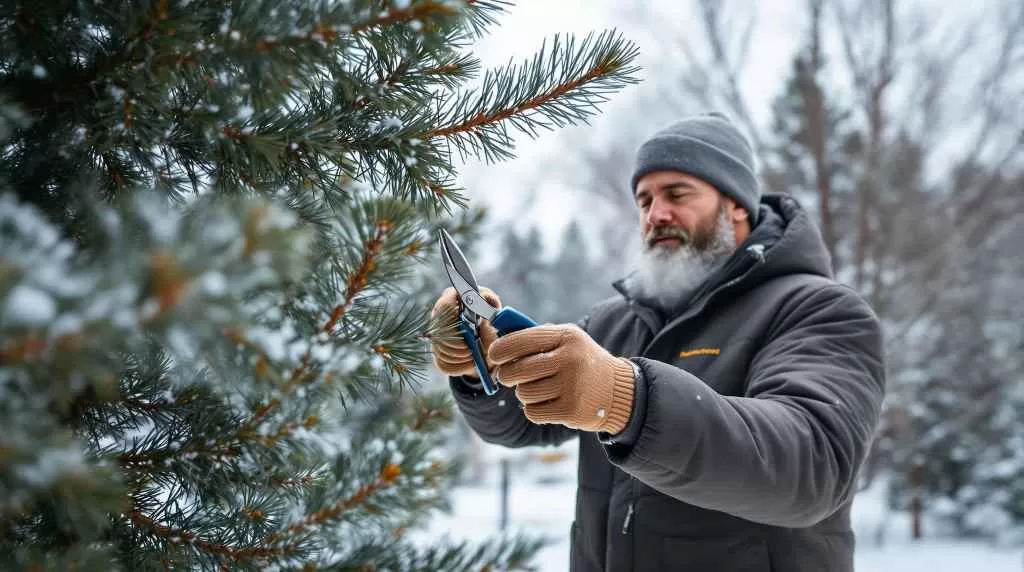
Tree and Shrub Pruning
Late winter is one of the best times to prune trees and shrubs in Castle Pines. With no leaves in the way, it’s easier to see branch structure and make cuts that encourage healthy spring growth and long-term plant shape.
Pruning for Shape and Health
Focus on removing dead, broken, or crossing branches to open up the canopy and prevent disease. Pruning at this time also helps control size and shape before the plant puts energy into new growth.
Knowing What Not to Prune
Be careful not to prune spring-blooming shrubs like lilacs or forsythia in late winter—doing so may remove flower buds that formed the previous year. Save these for light shaping after they bloom to preserve color in your landscape.
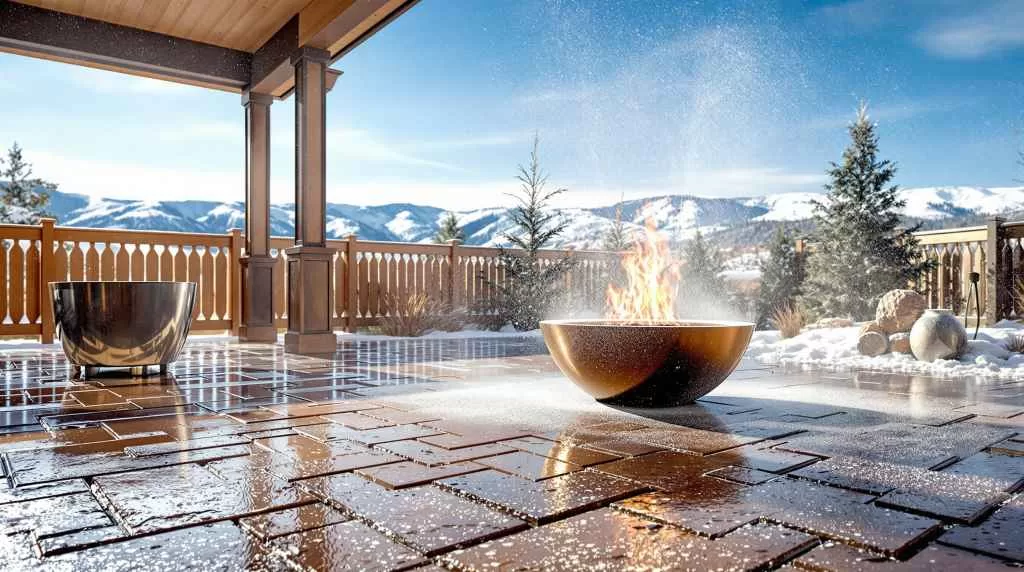
Preparing Hardscapes and Outdoor Living Areas
Before spring entertaining begins, it’s smart to inspect and refresh the hardscape elements around your home. From patios to retaining walls, these features are major investments—and maintaining them is a key part of any custom Castle Pines landscaping strategy that ensures beauty and durability year-round.
Cleaning Paver Patios and Concrete
Winter can leave behind a layer of grime, moss, or debris. A quick pressure wash or surface sweep can instantly brighten pavers and concrete, making your outdoor areas feel clean and inviting again.
Checking for Settling or Cracks
Inspect patios, walkways, and retaining walls for settling, heaving, or surface cracks caused by freeze-thaw cycles. Catching issues early allows for small repairs before they become larger structural problems.
Refreshing Decorative Gravel or Mulch
If gravel or mulch beds look sparse or faded, now’s the time to top them off with fresh material. This not only improves appearance but also supports moisture retention and weed suppression once the growing season begins.
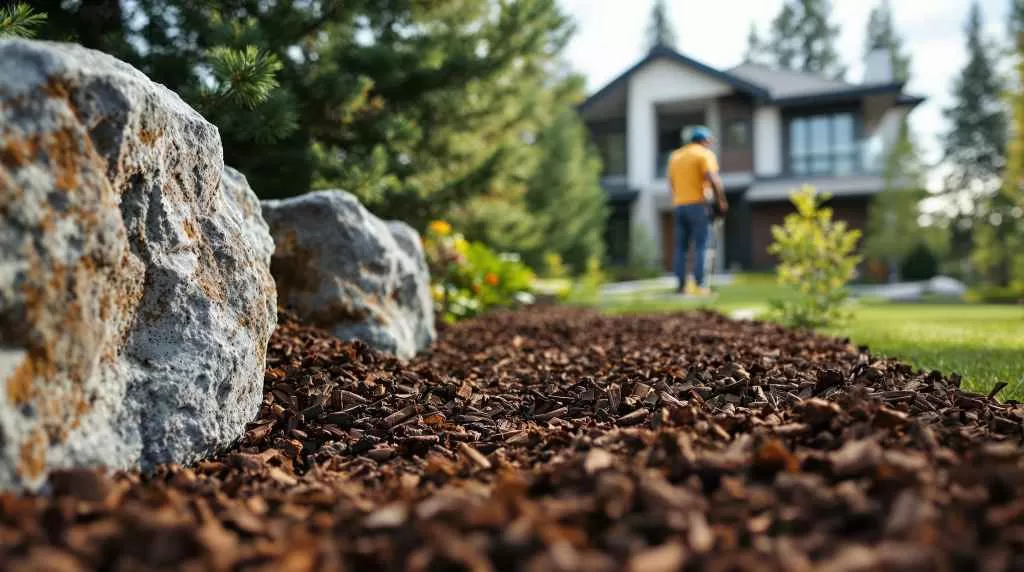
Refreshing Mulch and Rock Beds
Replenishing mulch and decorative rock is a quick way to revive the look of your landscape and protect your plant beds as the season changes. If you’re aiming for a clean, cohesive look across your entire yard, refreshing these materials is often one of the simplest upgrades to enhance professional outdoor design in Castle Pines.
Measuring Coverage Areas
Before ordering new mulch or rock, take accurate measurements of your beds. Knowing the square footage and desired depth (usually 2–3 inches) helps you calculate the volume needed and avoid over- or under-buying.
Choosing the Right Product
Pick a material that complements your home’s color palette and existing landscape style. Whether it’s black bark mulch, red cedar, or Colorado river rock, consistent material choice creates a polished and cohesive appearance.
Timing for Maximum Impact
Hold off on applying fresh mulch until after fertilizing, planting, and soil prep are complete. This ensures your mulch isn’t disturbed and can serve as a final layer that locks in moisture and suppresses weeds.
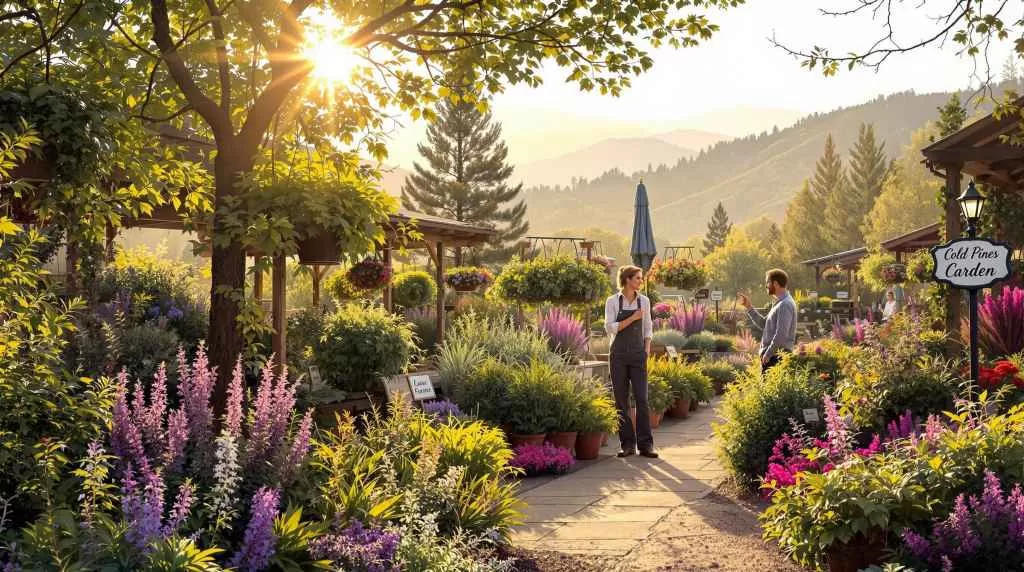
Planting Considerations for Castle Pines
With its unique elevation and climate zones, Castle Pines presents some special planting challenges—and opportunities. Planning your landscape early ensures both beauty and resilience, especially if you’re focused on boosting value with Castle Pines landscaping that lasts through all four seasons.
Understanding Castle Pines’ Microclimates
Castle Pines spans a range of elevations, meaning frost dates and soil conditions can vary significantly even within the same neighborhood. Knowing your yard’s exposure, wind patterns, and drainage helps you select plants that thrive.
Early Season Plant Options
Cold-hardy perennials, evergreens, and certain shrubs can be planted as soon as the ground is workable. Look for varieties that tolerate temperature swings and late frosts, such as ornamental grasses, dwarf pines, and creeping phlox.
Planning for Water Efficiency
With Colorado’s dry climate, it’s smart to incorporate low-water-use plants and efficient irrigation zones. Xeriscaping elements like native wildflowers, gravel beds, and drip systems can reduce water bills while keeping your yard lush and colorful.
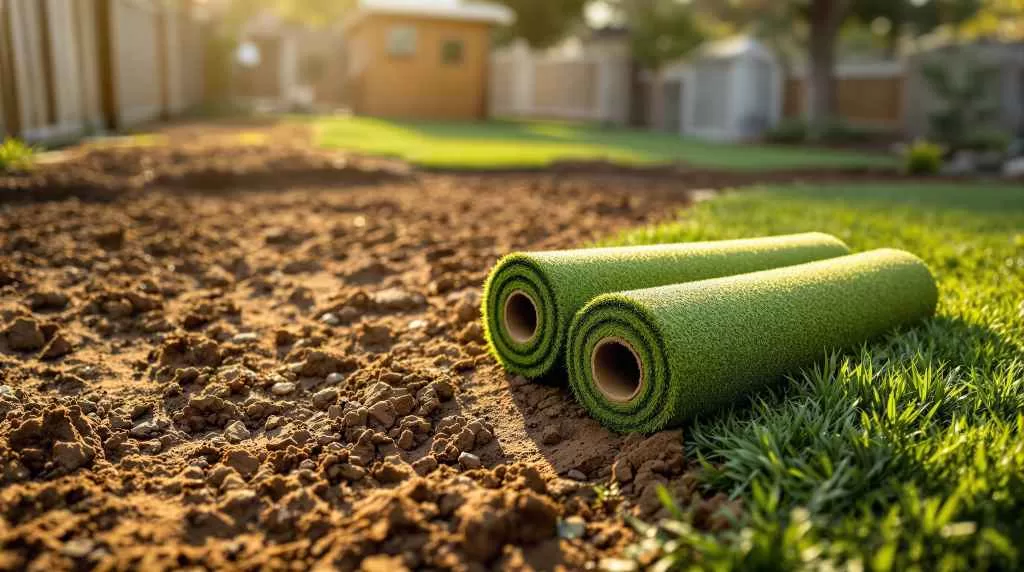
Turf Repair or Replacement
If winter has left your lawn looking sparse or patchy, now’s the time to plan your turf recovery strategy. Whether you opt for seed, sod, or artificial grass, taking action in late winter ensures your yard is ready for spring enjoyment—and it’s a common first step in many full-scale backyard makeovers in Castle Pines.
Identifying Damaged Areas
Walk your lawn and look for bare spots, matted grass, and discolored patches that didn’t bounce back after snowmelt. These areas often need more than just watering—they signal underlying compaction or root damage that should be addressed before new growth begins.
When to Overseed vs. Replace
If your lawn is mostly intact with just a few trouble areas, overseeding and fertilizing may be enough. But for larger dead zones or uneven surfaces, full sod replacement or even artificial turf installation may offer a faster, more consistent result.
Benefits of Professional Turf Installation
Hiring pros ensures proper grading, soil prep, and seam work, especially for larger areas. A professionally installed lawn not only looks better—it performs better, drains more effectively, and holds up longer under kids, pets, and Colorado’s variable weather.
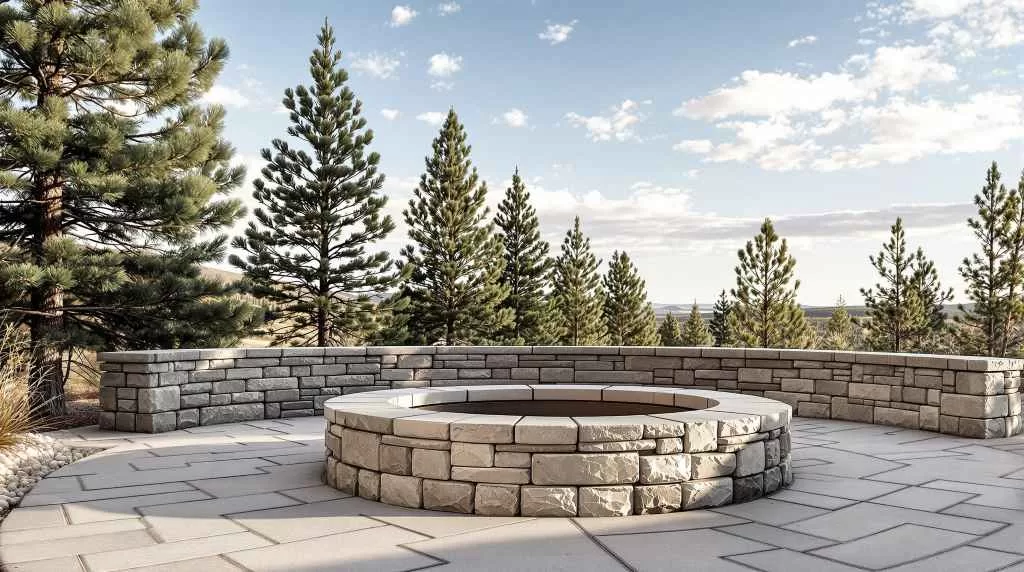
Fire Pit and Outdoor Feature Maintenance
As spring approaches, now is the time to prep your fire features, lighting, and other outdoor amenities for safe, enjoyable use. Giving these areas a little attention in late winter ensures they’re ready for evening gatherings and weekend relaxation the moment the weather warms.
Cleaning Fire Pits and Fireplaces
Remove ash buildup, charred debris, and leaves from fire pits or outdoor fireplaces. For gas units, check the burner ports and clean out any blockages to ensure smooth ignition and safe operation.
Inspecting Lighting Systems
Test all landscape lighting zones, including path lights, uplights, and spotlights. Replace burned-out bulbs, clean lenses, and check wiring for damage from snow, rodents, or freeze-thaw cycles.
Touching Up Paint or Sealant
Inspect wood, metal, and concrete surfaces around your outdoor features. If paint is peeling or sealant is fading, apply a fresh coat or water-repellent finish now to protect your materials before spring sun and rain roll in.
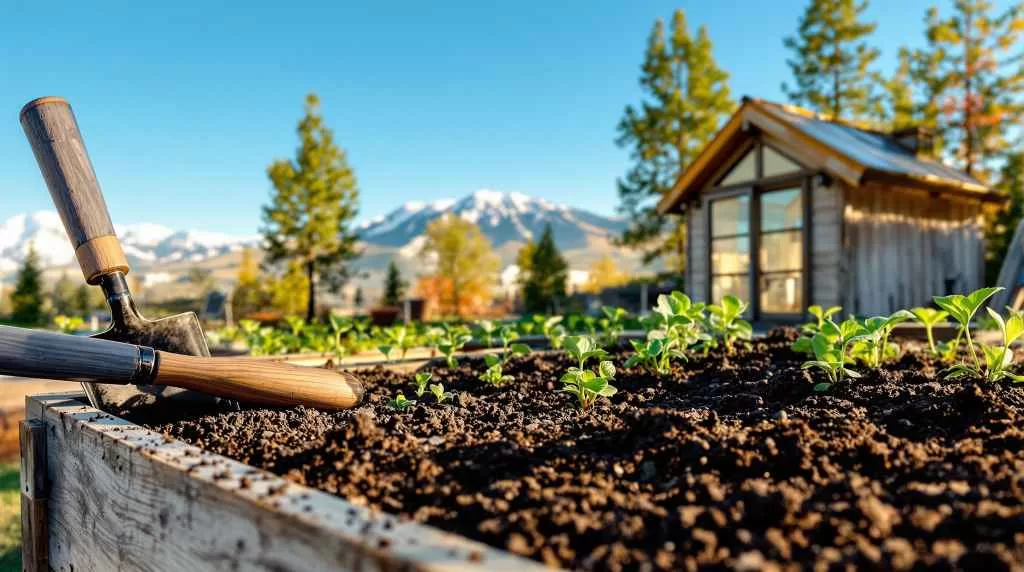
Preparing Garden Beds and Vegetable Plots
Late winter is the perfect time to prep your garden spaces for a productive growing season. Whether you’re planting herbs, vegetables, or edible flowers, early prep helps ensure healthier soil, better yields, and an organized layout that supports success.
Planning Your Garden Layout
Sketch out your garden beds now to plan for crop rotation, companion planting, and access paths. A well-thought-out layout prevents overcrowding and makes watering, weeding, and harvesting more efficient all season long.
Starting Seeds Indoors
Begin germinating cool-season crops like lettuce, broccoli, or kale indoors under grow lights or in a sunny window. Starting early gives these plants a head start so they’re strong enough for transplanting when the soil warms.
Enhancing Soil for Vegetables
Work compost or organic soil amendments into your raised beds or garden plots while the soil is still soft. This improves drainage, boosts microbial activity, and replenishes nutrients lost over the winter.
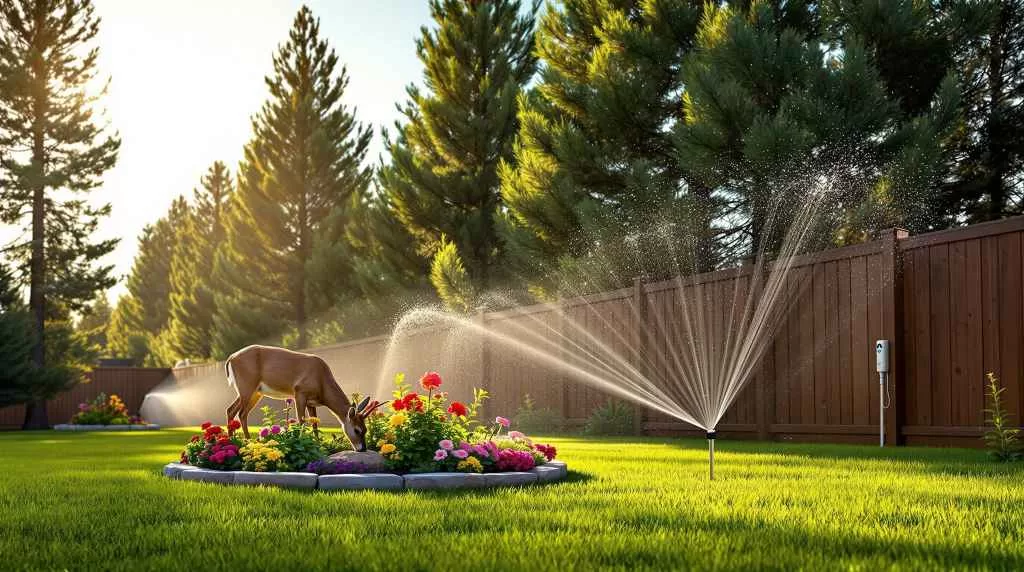
Wildlife and Pest Management
As temperatures rise, wildlife and pests begin to emerge—and late winter is your chance to get ahead of the issues before they escalate. With some proactive steps, you can protect your plants, lawn, and outdoor living spaces from unwanted visitors.
Deer and Rabbit Deterrents
Castle Pines is home to plenty of deer and rabbits that can quickly devastate young plants. Install physical barriers, motion-activated sprinklers, or use organic repellents to discourage browsing before your new growth appears.
Insect Prevention
Pests like aphids, spider mites, and lawn grubs often start early. Apply natural insect controls or beneficial nematodes now, and monitor your garden regularly so you can respond quickly to signs of infestation.
Rodent and Mole Control
Look for signs of tunneling or burrowing near foundations, patios, or garden beds. Address issues early by setting live traps, placing repellents, or contacting a pest professional if activity becomes persistent.
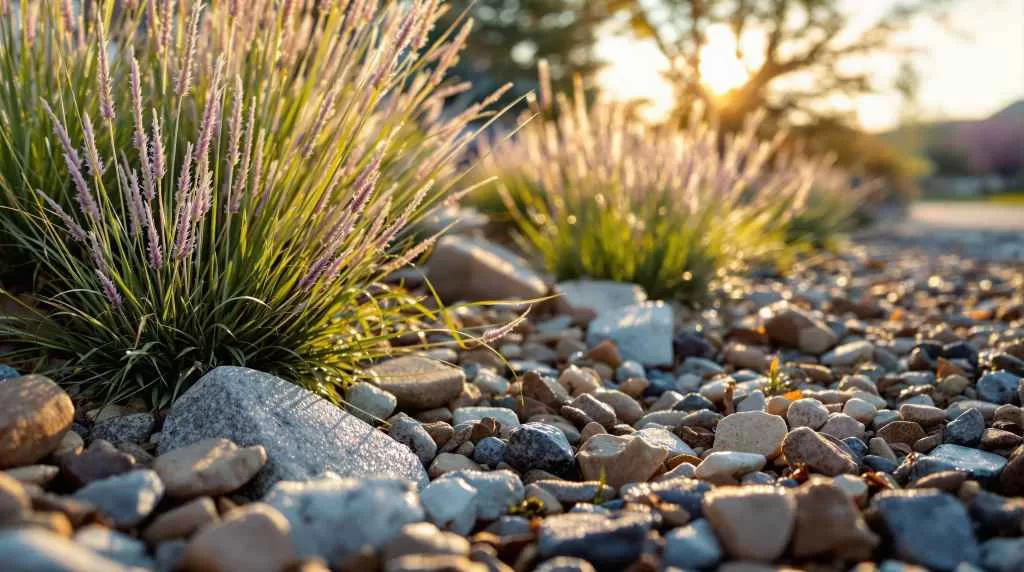
Sustainable Landscaping Practices
Incorporating sustainable strategies during late winter cleanup sets your landscape up for long-term beauty and efficiency. With a few mindful choices, you can reduce water use, improve soil health, and support Castle Pines’ natural environment.
Composting Yard Waste
Turn your yard debris into nutrient-rich compost by starting a simple compost pile or bin. Use dead leaves, grass clippings, and plant trimmings to reduce landfill waste while creating a valuable soil amendment for your garden.
Reducing Water Use
Install drip irrigation systems, smart timers, and moisture sensors to ensure plants receive only what they need. Grouping plants by water requirements and choosing drought-tolerant species can further cut down your usage.
Native Plant Integration
Planting Colorado-native trees, grasses, and perennials supports local pollinators, reduces maintenance, and increases resilience. These plants are naturally adapted to Castle Pines’ soil, climate, and wildlife—making them both beautiful and practical.

Hiring a Landscaping Professional
While many late winter landscaping tasks are DIY-friendly, there are times when calling in a professional can save you time, stress, and long-term costs. Knowing when to bring in expert help ensures that your landscape is both functional and stunning come spring.
When DIY Isn’t Enough
If your yard has grading issues, poor drainage, or large dead zones, it’s wise to consult a professional. These problems often require specialized equipment, proper permits, or technical knowledge to resolve correctly.
What to Ask Before Hiring
When evaluating potential landscapers, ask about their experience with local soil and elevation, their familiarity with Castle Pines HOA guidelines, and whether they handle both design and installation. Getting references and reviewing portfolios is also highly recommended.
Benefits of Working with Local Experts
Castle Pines landscaping professionals understand the unique microclimates, water restrictions, and HOA standards that shape every project. Their local experience means smoother installations, better plant selection, and fewer surprises along the way.
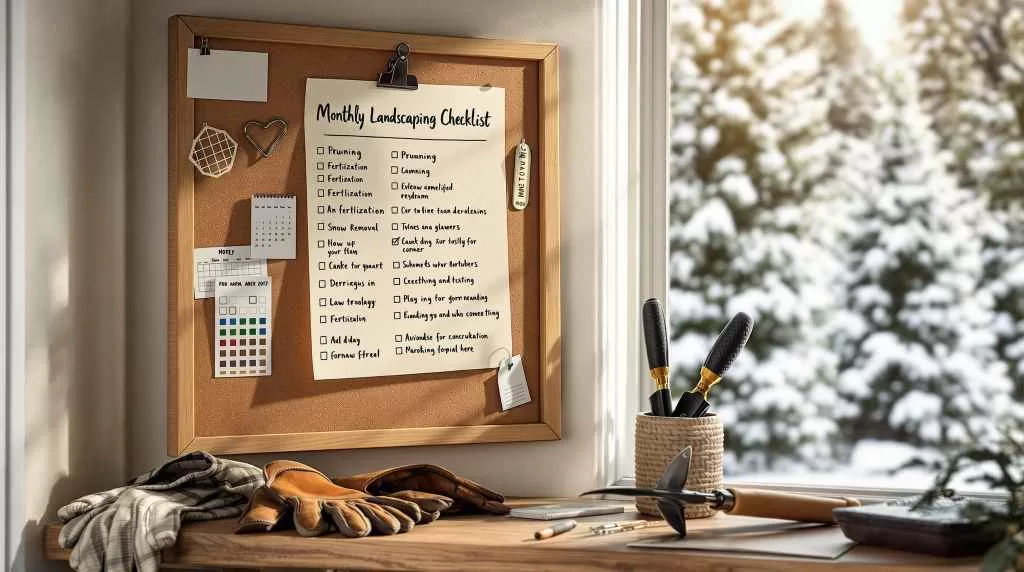
Seasonal Maintenance Calendar
Breaking spring prep into monthly tasks makes it easier to stay on top of your landscape and avoid last-minute rushes. Here’s a quick seasonal guide to help you pace your efforts and prioritize what matters most.
February Tasks
Focus on planning, pruning, debris removal, and material research. It’s also a good time to contact landscape professionals and finalize your project timeline before their spring calendars fill up.
March Tasks
Apply pre-emergents, test irrigation systems, and amend your soil. Begin hardscape cleaning, mulch prep, and indoor seed starting for cool-season crops.
April Tasks
Complete fertilizing, turf repair, mulching, and irrigation activation. This is also the ideal time to plant cold-tolerant shrubs, install edging, and schedule any final spring installations.
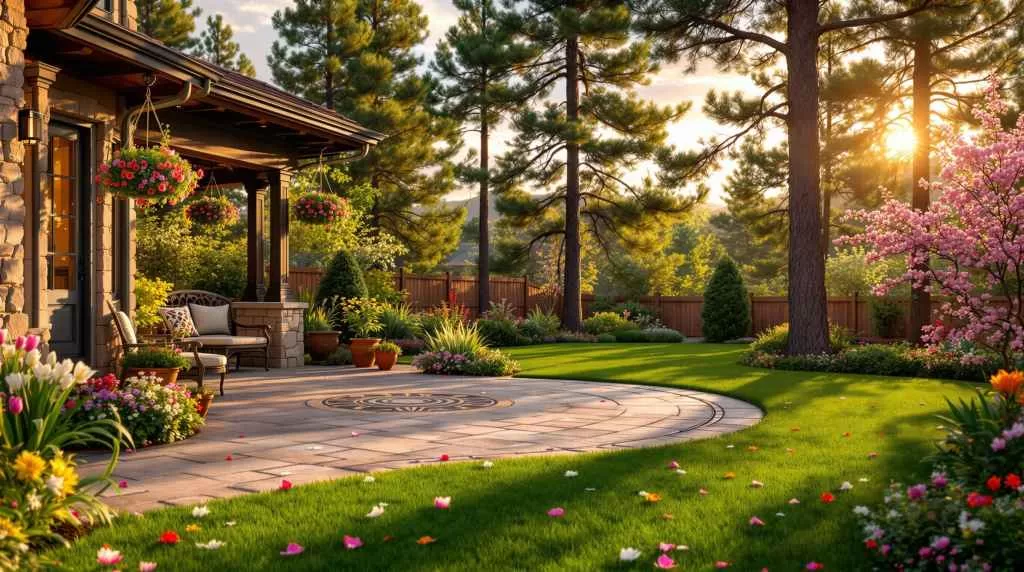
Ready to Transform Your Outdoor Space?
If you’re feeling inspired to refresh your landscape this spring, our team is here to help bring your vision to life. We specialize in high-end, custom landscaping throughout Castle Pines, as well as nearby areas like Castle Rock, Parker, and Lone Tree. Whether you’re updating your turf, adding a fire pit, or redesigning your entire yard, we offer personalized guidance and expert craftsmanship every step of the way. Reach out today to get started—spring is the perfect time to invest in your outdoor space and create something truly exceptional.

